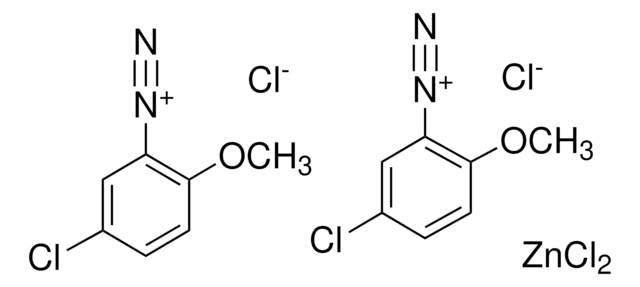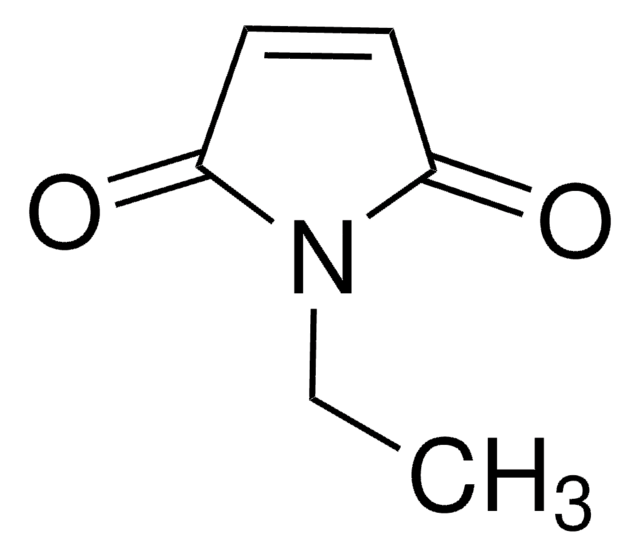MAB3194
Anti-Glutathione: N-ethylmaleimide adduct Antibody, clone 8.1GSH
clone 8.1GSH, Chemicon®, from mouse
About This Item
Produtos recomendados
fonte biológica
mouse
Nível de qualidade
forma do anticorpo
purified antibody
tipo de produto de anticorpo
primary antibodies
clone
8.1GSH, monoclonal
reatividade da espécie (prevista por homologia)
mammals
fabricante/nome comercial
Chemicon®
técnica(s)
ELISA: suitable
flow cytometry: suitable
immunocytochemistry: suitable
immunohistochemistry: suitable
western blot: suitable
Isotipo
IgG1
Condições de expedição
wet ice
modificação pós-traducional do alvo
unmodified
Categorias relacionadas
Especificidade
Imunogênio
Aplicação
Immunocytochemistry: 1:100 - 1:500 for assessment of intracellular GSH distribution.
ELISA: 1:100,000 - 1:200,000 to quantify GSH at >2 mM in biological specimens.
Flow cytometry: 1:100 - 1:1,000
Cells were fixed with cold 1% PFA for 5 min and vortexed into methanol (-20°C) containing 5mM NEM (10 min on dry ice) or 10 μM NEM (N-ethyl maleimide) for 30 min at RT.
Optimal working dilutions must be determined by end user.
Positive Control: Peripheral blood mononuclear cells (PBMC) treated with NEM
Neuroscience
Oxidative Stress
forma física
Armazenamento e estabilidade
Outras notas
Informações legais
Exoneração de responsabilidade
Não está encontrando o produto certo?
Experimente o nosso Ferramenta de seleção de produtos.
Código de classe de armazenamento
10 - Combustible liquids
Classe de risco de água (WGK)
WGK 2
Ponto de fulgor (°F)
Not applicable
Ponto de fulgor (°C)
Not applicable
Certificados de análise (COA)
Busque Certificados de análise (COA) digitando o Número do Lote do produto. Os números de lote e remessa podem ser encontrados no rótulo de um produto após a palavra “Lot” ou “Batch”.
Já possui este produto?
Encontre a documentação dos produtos que você adquiriu recentemente na biblioteca de documentos.
Nossa equipe de cientistas tem experiência em todas as áreas de pesquisa, incluindo Life Sciences, ciência de materiais, síntese química, cromatografia, química analítica e muitas outras.
Entre em contato com a assistência técnica



